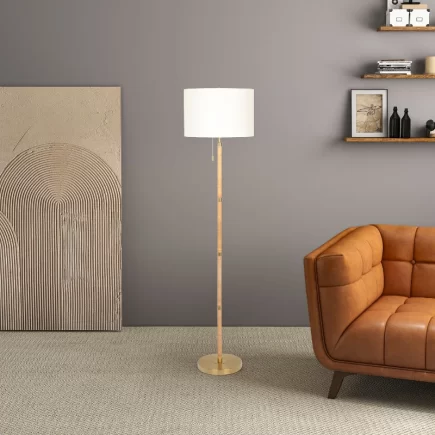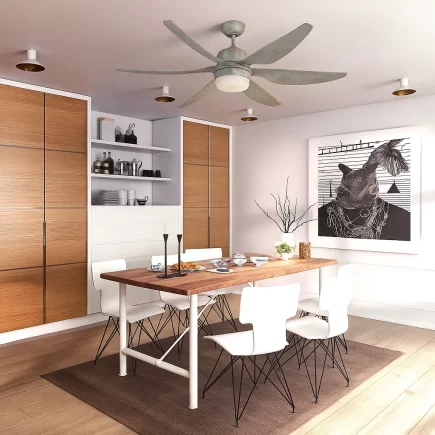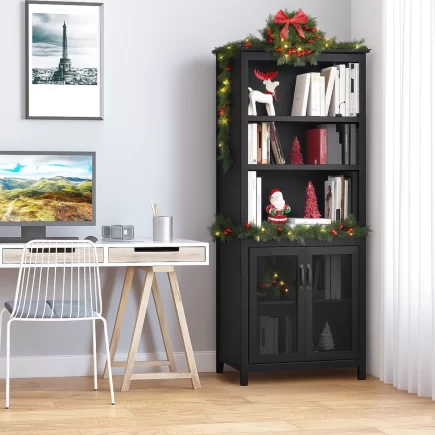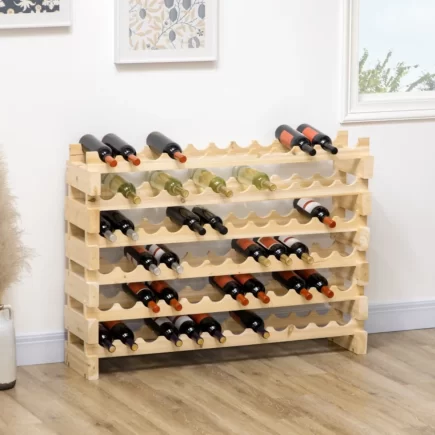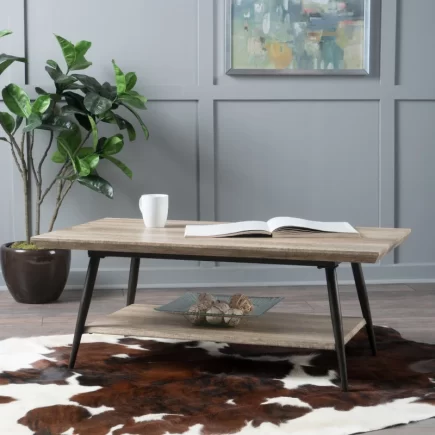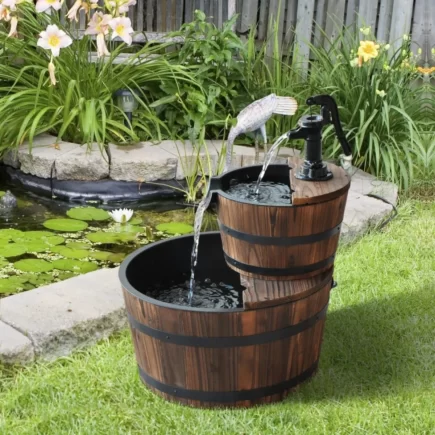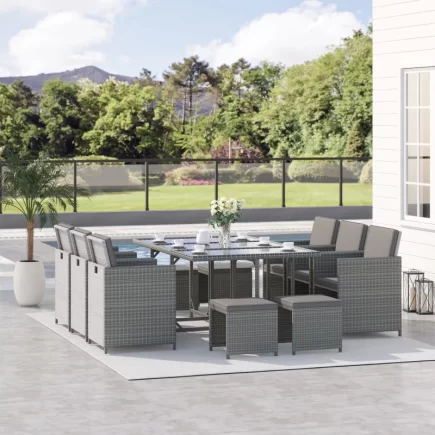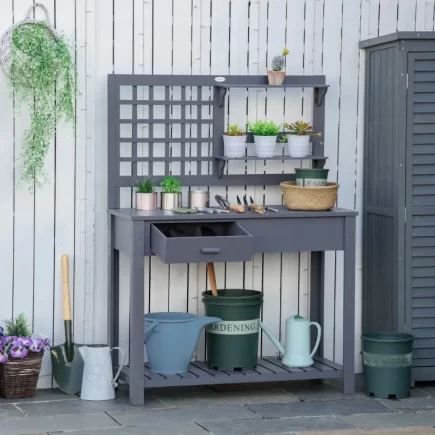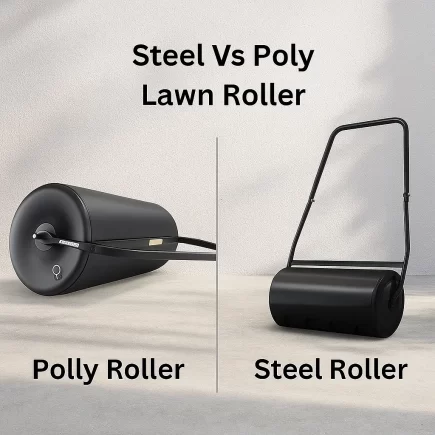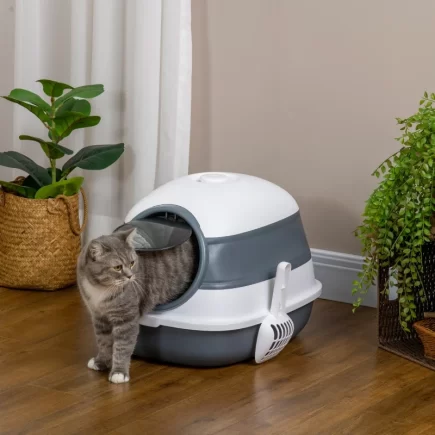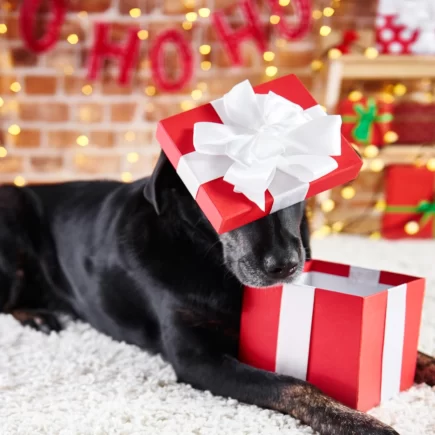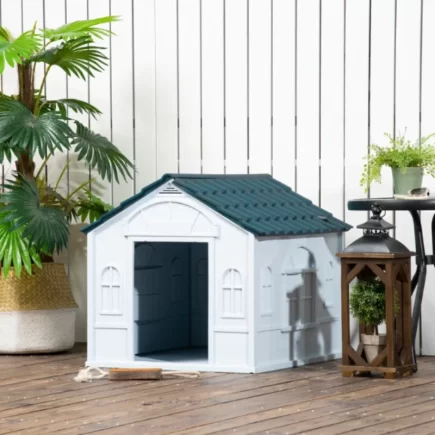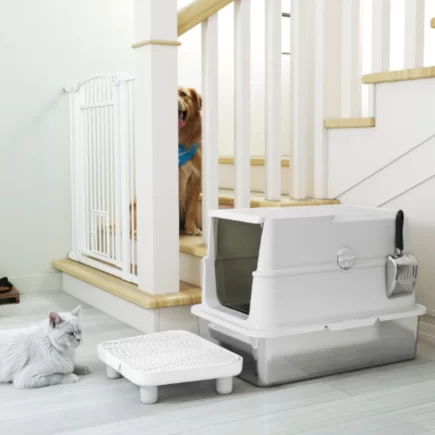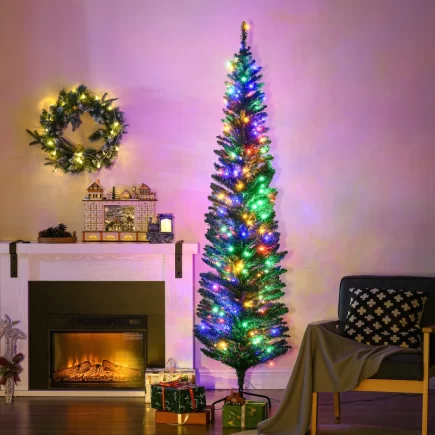Barbecuing ribs over charcoal isn’t just cooking, it’s a craft. For those serious about flavor and texture, nothing rivals the deep smokiness and caramelized crust that only a charcoal grill can deliver. From backyard enthusiasts to seasoned pitmasters, charcoal grilling offers better control over heat and smoke, producing ribs that are tender on the inside with a perfectly crisp bark on the outside.

In this comprehensive guide, we’ll show you exactly how to master this technique, step by step, while highlighting top-tier equipment from Aosom to help you get it right from the first cookout.
Understanding Rib Types: What You Need to Know

Before firing up the grill, it’s important to understand the different types of ribs available. Each cut offers its own texture, cook time, and flavor profile, choosing the right one helps set the stage for barbecue success. The two most popular cuts for grilling are baby back ribs and spare ribs.
Baby Back Ribs
Baby back ribs come from the upper rib cage and are shorter, leaner, and more curved than spare ribs. They cook faster (about 2 hours) and offer tender meat with a mild flavour, great for beginners or quick grilling.
Spare Ribs
Spare ribs come from the lower rib cage, are longer and fattier, and need slow cooking (3-4 hours) for rich, juicy flavor. They can be trimmed into St. Louis-style ribs for easier grilling and presentation. Baby back ribs are more tender and beginner-friendly, while spare ribs offer more juiciness and flavor when cooked low and slow.
Tip: St. Louis-style ribs are trimmed spare ribs and offer a uniform shape that's easier to grill evenly.
Essential Gears for Grilling Ribs
Successful rib grilling begins with having the right tools. Here’s what you need:

- Charcoal Grill: A high-capacity, vented model like the Outsunny 21-Inch Rolling BBQ Grill makes temperature control and cooking multiple racks simple. With its built-in cutting board and storage shelf, you can prep, cook, and serve in one place.
- Chimney Starter: Essential for fast, even coal ignition without lighter fluid. It gets your fire started cleanly in 15 minutes.
- Digital Thermometer: Precision is key. Ensure your ribs reach the ideal internal temp of 198–200°F.
- Rib Rack or Drip Pan: Helps maximize space on the grill and catch drippings.
Choosing the Right Charcoal & Wood
Charcoal and wood choices influence flavor, heat intensity, and cooking duration.

| Fuel Type | Pros | Best Use Scenario |
| Lump Charcoal | Burns hotter, natural flavor | Direct grilling or fast searing |
| Briquettes | Burns longer, consistent heat | Low and slow BBQ |
| Wood Chips | Adds extra flavor (hickory, apple) | For smoke-enhanced cooking |
Flavor Pairing Tip: Use apple wood for sweet pork flavor, hickory for bold smoke, or cherry wood for a subtle fruity edge.
Step 1: Prepping the Ribs Like a Pro
Proper prep sets the stage for success.
Cleaning and Trimming

- Trim excess fat to promote even cooking and reduce flare-ups.
- Remove the membrane from the bone side of the ribs using a paper towel and butter knife. This makes the ribs more tender and allows flavors to penetrate.
- Score thick fat caps with a knife to help them render and crisp nicely over the coals.
Rubs and Seasonings That Work Best Over Charcoal
1. Choose the Right Rub Ingredients
Opt for a salt-forward rub that includes ingredients like kosher salt, garlic powder, onion powder, chili powder, smoked paprika, and black pepper. Avoid high-sugar rubs if you’re cooking directly over charcoal, as they can burn and become bitter.
2. Prepare a Balanced Homemade Rub
In a bowl, mix:
a. 2 tablespoons of brown sugar
b. 1 tablespoon of kosher salt
c. 1 tablespoon of smoked paprika
d. 1 teaspoon each of chili powder, garlic powder, and black pepper
This blend offers flavour without overwhelming the natural taste of the ribs.
3. Apply the Rub Generously
Pat the ribs dry with paper towels, then coat them evenly with the rub mixture on all sides. Press the rub into the meat to ensure it sticks well and forms a nice crust during grilling.
4. Let the Ribs Rest
Allow the seasoned ribs to sit at room temperature for 30–45 minutes. This step helps the rub penetrate the meat and boosts flavour absorption before grilling.
Step 2: Setting Up Your Charcoal Grill for 2-Zone Cooking
1. Light the Charcoal
Start by lighting your charcoal using a chimney starter or preferred method. Once the coals are fully lit and glowing, they’re ready to be arranged in the grill.
2. Create the Two Zones
Pour all the lit charcoal onto one side of the grill. This will be your direct heat zone, used for searing and crisping. Leave the other half of the grill coal-free to create the indirect heat zone for slow cooking.
3. Position a Drip Pan
Place a metal drip pan on the indirect side, directly beneath where the ribs will sit. This catches any fat drippings and helps prevent flare-ups while keeping the grill cleaner.
4. Adjust the Grill Vents
Use your grill’s top and bottom vents to control airflow. Open them slightly to maintain a stable cooking temperature between 275–300°F, ideal for cooking ribs low and slow.
5. Place the Grates and Preheat
Position the cooking grate back in place and close the lid. Allow the grill to preheat for about 10–15 minutes before adding the ribs. This helps stabilise the temperature across both zones.
Grills like the Outsunny 21-Inch Rolling BBQ Grill make this setup easy with built-in ventilation and heat control features.

Step 3: Grilling Ribs
1. Place Ribs on Indirect Heat
Begin by placing your ribs on the indirect heat zone of your charcoal grill. This area allows for gentle, even cooking without direct flame contact.
2. Flip and Rotate Regularly
Flip and rotate the ribs every 10 to 20 minutes. This promotes even cooking and prevents overcooking in any one spot due to heat pockets.
3. Spritz or Mop for Moisture
After 60 to 90 minutes of cooking, start spritzing or mopping the ribs with your chosen liquid (such as apple juice, vinegar, or a marinade). This adds moisture and enhances flavour.
4. Check Internal Temperature
At the 2 to 3 hour mark, use a meat thermometer to check for doneness. Insert it into the thickest part of the meat (not touching bone), the target temperature is 198 to 200°F.
5. Rest and Serve
Once the ribs reach the right temperature, remove them from the grill and let them rest for 10–15 minutes. This allows the juices to redistribute for tender, flavourful ribs.
Using the “321 Mop” or Basting Techniques

The “3-2-1” method is a well-known and beginner-friendly technique for smoking pork ribs, designed to achieve tender, flavorful results:
- 3 hours: Smoke the ribs uncovered at 225°F (107°C) to develop a deep, smoky flavor.
- 2 hours: Wrap the ribs tightly in aluminum foil with mop sauce to braise and tenderize the meat.
- 1 hour: Remove the foil, brush with barbecue sauce, and return the ribs to the smoker to caramelize and form a rich, glossy finish.
During the second stage, the mop sauce acts as a braising liquid, locking in moisture and infusing the ribs with additional flavor.
321 Mop Sauce Recipe
- 1/4 cup fine salt for savory depth
- 1/4 cup ground cayenne pepper for a bold kick
- Juice from 1 lemon to add acidity and brightness
- 28 oz apple cider vinegar for moisture and flavor infusion
Apply with a mop brush or spray bottle every 20 minutes after the first hour. This creates a tangy crust while helping the ribs stay juicy.
Quick Tip: Apple cider vinegar not only adds moisture—it helps tenderize the meat naturally during the cooking process.
Step 4: Maintaining Steady Grill Temp

Use the grill’s air vents to manage airflow. Open vents increase temperature, while closing them reduces it. Add fresh charcoal as needed during the cooking. Models like rotisserie grill with multiple grade levels allow for height adjustments without disrupting the fire.
Signs Your Ribs Are Perfectly Cooked
You know your ribs are done when:
- Internal temp hits 198–200°F.
- A gentle bend test shows flexibility.
- Bones start to protrude by about 1/2 inch.
Avoid poking too often, which lets juices escape. Instead, trust your thermometer and visual cues.
Step 5: To Sauce or Not to Sauce: Final Glaze Options
Whether or not to sauce your ribs is a personal choice. Here’s how to do it the right way:
Finishing Touches
- Dry Finish
Stick with just the rub. This is ideal for purists or competition-style ribs that showcase the meat’s natural flavour.
- Sticky Glaze
If you prefer sauced ribs, brush on BBQ sauce during the last 10–15 minutes of grilling over direct heat. Let it caramelise without burning.
Recommended Sauces: Choose low-sugar or vinegar-based sauces to prevent burning. Homemade blends using tomato paste, vinegar, honey, and spices offer great flavour control.
Step 6: Cutting, Resting & Serving Ribs with Style

1. Rest the Ribs
Once your ribs are off the grill, let them rest for 10–15 minutes. This allows the juices to redistribute throughout the meat, ensuring each bite stays tender and moist.
2. Slice with Precision
Use a sharp slicing knife to cut between the bones. Turn the rack bone-side up for better visibility, and make clean, even cuts to create perfect individual portions.
3. Plate with Classic Sides
Serve your ribs with popular BBQ sides like coleslaw, baked beans, mac and cheese, or cornbread. These traditional accompaniments balance the smokiness and add variety to the meal.
4. Sauce on the Side
Offer extra BBQ sauce or mop mixture on the side. This gives guests the option to add more flavour without overwhelming the ribs’ natural texture or rub.
5. Serve with Style
Provide both sauced and dry-rubbed ribs to cater to different tastes. Add wet wipes or napkins to the table, eating ribs is delightfully messy and meant to be fun.
Storing Leftovers and Reheating Ribs
Ribs are just as good the next day, if not better!
Storing:
- Let ribs cool to room temp.
- Wrap tightly in foil or place in an airtight container.
- Refrigerate for up to 4 days or freeze for up to 2 months.
Reheating:
- Oven: Wrap in foil and heat at 275°F for 20–30 minutes.
- Grill: Place over indirect heat for 10–15 minutes.
- Add a splash of apple juice or BBQ sauce to keep them juicy.
The Perfect Grilled Ribs
Mastering ribs on a charcoal grill may sound intimidating, but with the right setup, guidance, and a little patience, anyone can pull it off. Follow each step in this guide, and you’ll unlock rich, smoky flavours that impress even the most seasoned BBQ lovers. Even if this is your first time grilling ribs, follow these steps and you’ll serve up something that rivals any BBQ joint.
FAQs
1. What if my ribs cook unevenly on the grill?
Uneven cooking is often a result of poor heat distribution. To fix this, rotate the ribs frequently and ensure your charcoal is arranged for effective 2-zone cooking. Balance the coals to one side of the grill, and avoid placing the ribs too close to hot spots.
2. Can I cook ribs ahead of time and reheat them later?
Yes, you can partially cook ribs, refrigerate them, and finish cooking them on the grill. Alternatively, fully cooked ribs can be wrapped in foil and reheated over indirect heat. Be sure to bring the internal temperature to at least 145°F before serving.
3. My ribs turned out dry. What went wrong?
Dry ribs usually mean they were overcooked or cooked at too high of a temperature. To avoid this, use a meat thermometer to keep track of the internal temperature and maintain your grill temperature between 275–300°F. Additionally, mopping or spritzing the ribs during cooking can help retain moisture.
4. Is it okay to grill ribs straight from the fridge?
It’s best to let ribs sit at room temperature for 20–30 minutes before grilling. This helps ensure more even cooking and prevents the outer layers from drying out while the center catches up.
5. How do I add more smoke flavor without overpowering the meat?
To enhance the smoky flavor without overwhelming the ribs, use a smoker box or place soaked wood chips in foil packets with small holes. Add the packets gradually throughout the cook for a steady, controlled level of smoke.

